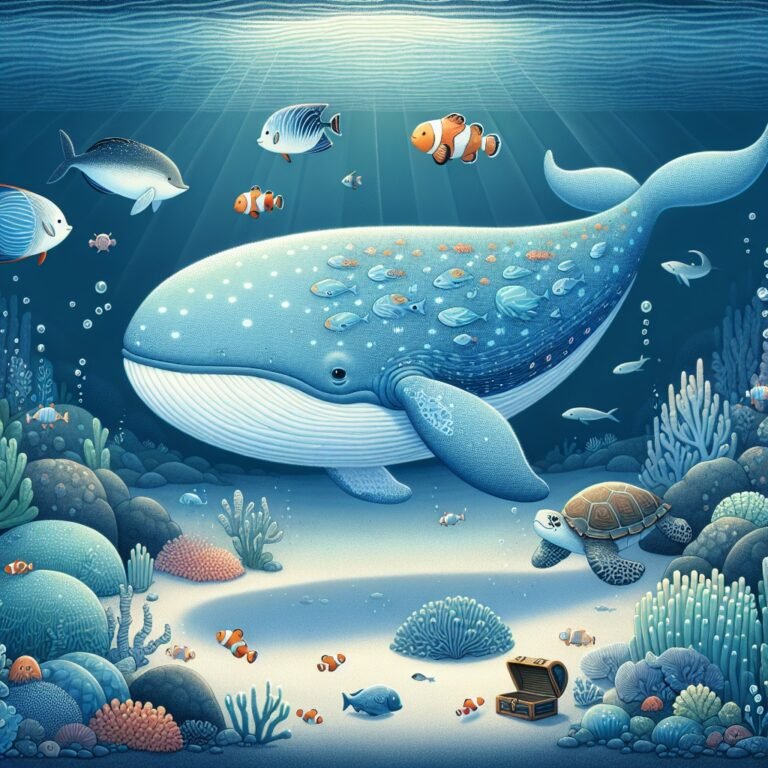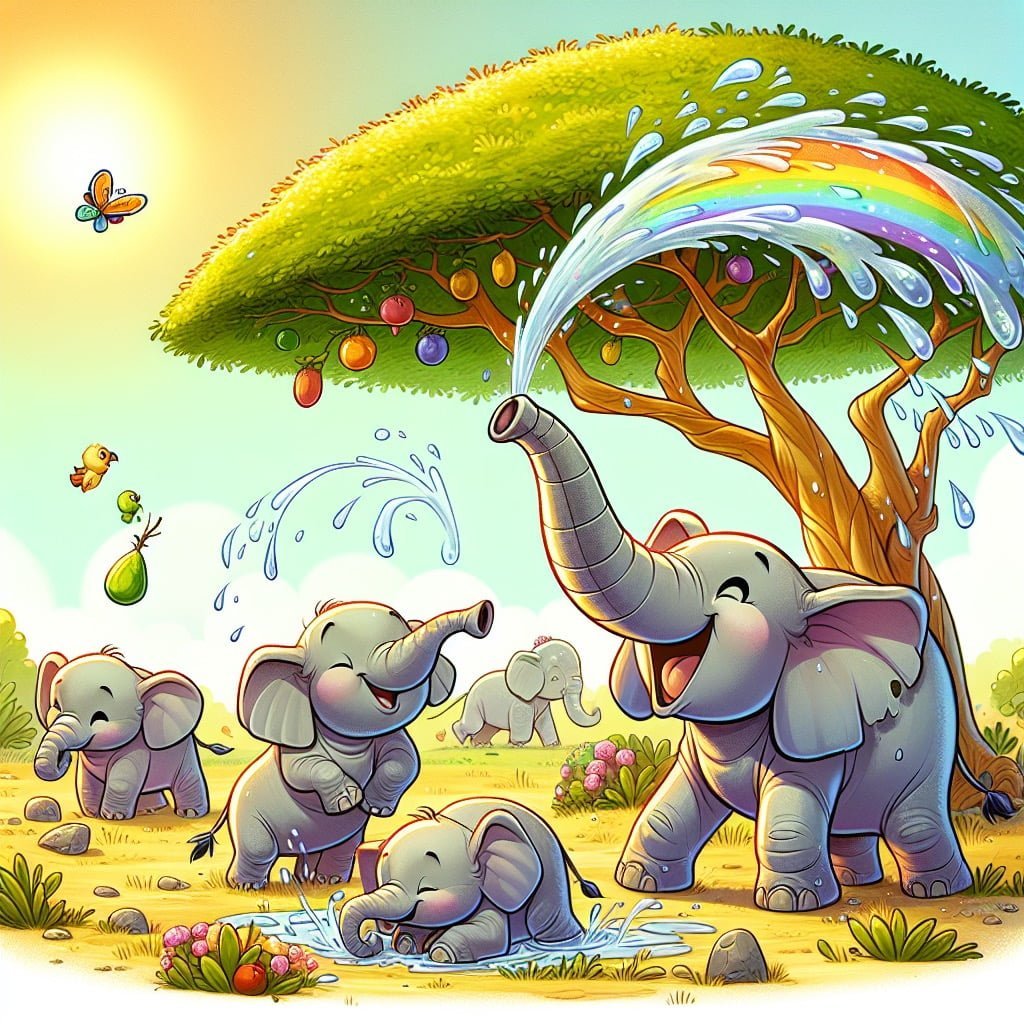Welcome to our blog post on Whale Facts For Kids! Whales are truly fascinating creatures that captivate the curiosity and imagination of children and adults alike. From their incredible size to their unique adaptations for survival in the ocean, there is so much to learn and discover about these majestic marine mammals. In this post, we will delve into fun facts about whales that will both entertain and educate young minds. Get ready to be amazed by the sheer scale of these magnificent animals, their remarkable abilities like echolocation and migration patterns, and the essential role they play in maintaining a healthy ocean ecosystem. Join us on this underwater journey as we explore the extraordinary world of whales and ignite a passion for marine life in the hearts of children everywhere. Let’s dive in and discover the wonders of Whale Facts For Kids!
Whale Facts For Kids
1. Whales Are the Largest Animals on Earth
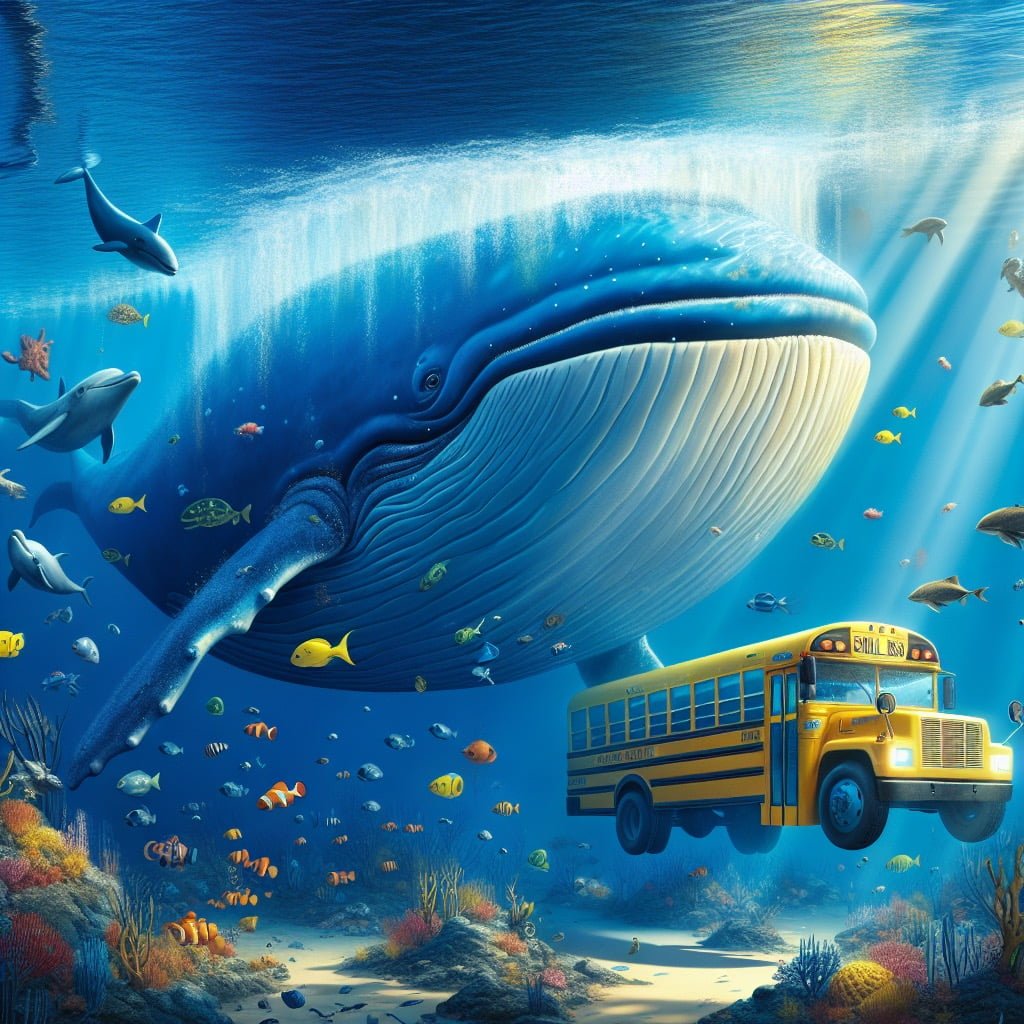
For younger kids: Whales are the biggest animals in the world and can grow as large as a school bus!
For older kids: Whales hold the title of being the largest animals on the planet, with the blue whale reaching lengths of over 100 feet and weighing as much as 200 tons.
Detailed explanation:Whales are truly remarkable creatures, holding the title of the largest animals on Earth. These magnificent marine mammals belong to the group of cetaceans, which also includes dolphins and porpoises. There are several different species of whales, ranging in size from the majestic blue whale to the smaller dwarf sperm whale.
One of the most fascinating Whale Facts For Kids is the sheer size of these animals. The blue whale, for example, can grow up to a staggering 100 feet in length and weigh as much as 200 tons. To put that into perspective, that’s the length of three school buses lined up end to end! Despite their enormous size, whales are graceful swimmers, using their powerful tails to propel themselves effortlessly through the water.
Another interesting fact about whales is their unique way of communicating. These intelligent creatures produce a variety of sounds, from haunting songs to clicks and whistles, which they use to communicate with each other over long distances. Some species, like humpback whales, are even known for their complex songs that can last for hours.
Whales also play a crucial role in maintaining the balance of the marine ecosystem. As apex predators, they help regulate the populations of their prey, ensuring the health of the ocean environment. Unfortunately, whales face numerous threats, including habitat destruction, pollution, and collisions with ships. Conservation efforts are crucial to protect these magnificent animals and ensure their continued survival for future generations to admire and learn from.
In conclusion, whales are not only the largest animals on Earth but also some of the most fascinating and important creatures in the ocean. By learning more about these incredible mammals, we can better appreciate the wonders of the natural world and work towards their protection and conservation.
Whale Facts For Kids
2. Whales Can Communicate Across Vast Distances

For younger kids: Whales talk to each other using special sounds that travel really far through the water.
For older kids: Whales use complex vocalizations, such as songs and clicks, to communicate with each other across great distances, sometimes spanning hundreds of miles.
Detailed explanation:Whales are known for their incredible ability to communicate across vast distances in the ocean. This phenomenon is truly fascinating and showcases the complexity of these magnificent creatures.
One of the most well-known ways in which whales communicate is through the use of sound. They are able to produce a wide range of vocalizations, including clicks, whistles, and songs. These sounds can travel for long distances underwater, allowing whales to communicate with each other even when they are far apart. This ability to communicate across vast distances is essential for many aspects of whale behavior, such as finding food, mating, and navigating through their environments.
Another interesting aspect of whale communication is the fact that different species have developed unique dialects and call patterns. This allows them to distinguish between individuals and groups, as well as convey specific information to one another. For example, killer whales have been shown to have distinct call patterns that vary among different populations.
Overall, the ability of whales to communicate across vast distances is a testament to their intelligence and social complexity. By studying whale communication patterns, researchers can gain valuable insights into the behavior and social dynamics of these incredible animals. So next time you hear about Whale Facts for Kids, remember the amazing ways in which whales are able to communicate with each other in the vast depths of the ocean.
Whale Facts For Kids
3. A Whale’s Heart is as Big as a Car

For younger kids: A whale’s heart is really huge, almost the same size as a small car!
For older kids: The heart of a blue whale, the largest animal on earth, is about the size of a small car and can weigh as much as 1,300 pounds.
Detailed explanation:Whale Facts For Kids are always fascinating, especially when it comes to the size of their hearts. It is truly incredible to think that a whale’s heart is as big as a car. To put this into perspective, the average size of a car is around 14 feet long and 6 feet wide. This means that a whale’s heart can be over 14 feet long and 6 feet wide, making it one of the largest hearts in the animal kingdom.
Whales are known for their immense size, with some species reaching lengths of over 100 feet and weighing up to 200 tons. With such a large body, it makes sense that they would need a heart that is equally as massive to pump blood efficiently throughout their bodies. The size of a whale’s heart allows it to circulate blood effectively, supplying oxygen and nutrients to all of its large organs and muscles.
In addition to their impressive size, Whale Facts For Kids also include interesting adaptations that help these marine mammals thrive in their aquatic environments. For example, whales have a high level of myoglobin in their muscles, which helps them store oxygen and dive to great depths for extended periods of time. Their unique respiratory system also allows them to take in large amounts of air quickly when they surface for a breath.
Overall, the fact that a whale’s heart is as big as a car is just one of many amazing Whale Facts For Kids that highlight the incredible nature of these magnificent creatures. From their sheer size to their intricate adaptations, whales continue to captivate and inspire awe in people of all ages.
Whale Facts For Kids
4. Whales Can Dive to Incredibly Deep Depths

For younger kids: Whales can dive very deep in the ocean, deeper than the tallest mountains on land!
For older kids: Some whale species, like the sperm whale, have been known to dive to depths of nearly 10,000 feet in search of food, making them some of the deepest diving mammals.
Detailed explanation:Whales are truly fascinating creatures, with their immense size and amazing abilities. One of the most impressive feats of whales is their ability to dive to incredibly deep depths in the ocean. This fact is not only awe-inspiring, but it also highlights the incredible adaptations that whales have evolved over millions of years to survive in their aquatic environment.
Whale Facts For Kids show that some species of whales, such as sperm whales, are known to dive as deep as 3,280 feet or more. This is an astonishing depth for any creature, let alone a mammal that needs to come up for air. How do whales manage to reach these depths without experiencing the effects of pressure that would crush most other animals?
One key adaptation that helps whales survive these deep dives is their anatomy. Whales have collapsible lungs, which means that they can collapse their lungs to prevent them from getting crushed under the immense pressure of the water at such depths. Additionally, their bodies are built to withstand the pressure, with strong bones and flexible rib cages that can cope with the extreme conditions.
Another crucial factor in the ability of whales to dive deep is their ability to store oxygen in their muscles and blood. This allows them to stay submerged for long periods of time without needing to come up for air. The blood of whales also contains a higher concentration of red blood cells compared to other mammals, which helps them transport oxygen more efficiently throughout their bodies.
In conclusion, the fact that whales can dive to incredibly deep depths is a testament to their incredible adaptations and evolutionary history. It is truly a remarkable aspect of these majestic creatures that never fails to captivate the imagination.
Whale Facts For Kids
5. Whales Have a Remarkable Migration Pattern

For younger kids: Whales travel really long distances every year, just like migratory birds!
For older kids: Various whale species undertake incredible migrations, traveling thousands of miles from cold feeding grounds to warmer breeding areas and back again, a journey which can span several months.
Detailed explanation:Whale Facts For Kids are fascinating, especially when it comes to their migration patterns. Whales are known to travel long distances throughout the year, often migrating between feeding and breeding grounds. One of the most remarkable migrations is that of the humpback whale, which can travel up to 16,000 miles round trip between its feeding grounds in cold waters and its breeding grounds in warmer waters.
Whales migrate for several reasons, including finding food, breeding, and avoiding predators. Some whale species, such as the gray whale, migrate over 10,000 miles each year, making it one of the longest migrations of any mammal. These migratory patterns are crucial for the survival of whale populations, as they allow whales to access different food sources and mate with other individuals from different areas.
Whale Facts For Kids can also include information about the different migration routes taken by whales. For example, some whales travel along the coasts, while others cross vast oceanic expanses. The migration patterns of whales are often influenced by ocean currents, temperature gradients, and the availability of food along the way.
Overall, understanding Whale Facts For Kids about whale migration patterns can help raise awareness about the importance of conservation efforts to protect these majestic creatures. By preserving their habitats and reducing human impacts such as pollution and ship strikes, we can ensure that whales continue to undertake their awe-inspiring migrations for generations to come.
Whale Facts For Kids
6. Humpback Whales Love to Sing
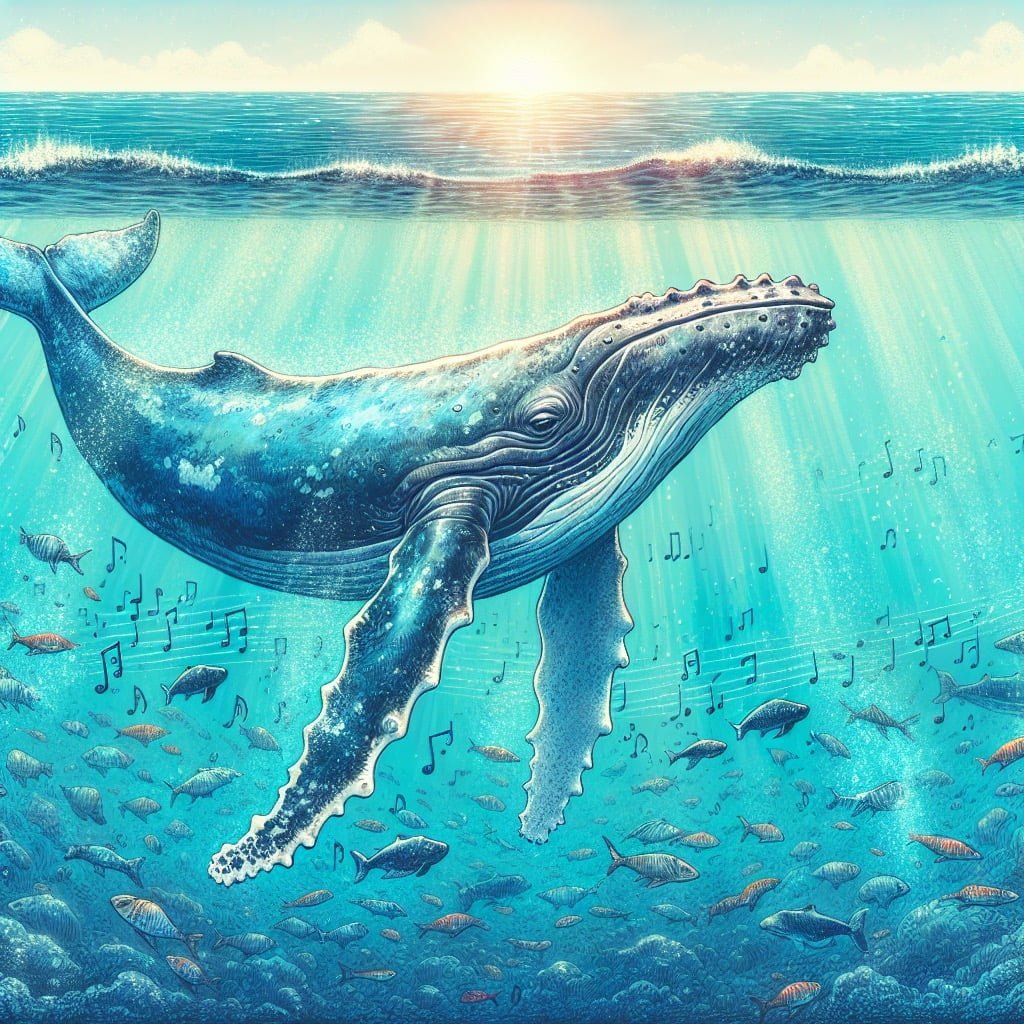
For younger kids: Humpback whales are famous for their beautiful songs that they sing in the ocean.
For older kids: Humpback whales are known for their intricate and haunting songs, which can last for hours and are thought to be used for communication and attracting mates.
Detailed explanation:Humpback whales are known for their beautiful and complex songs, making them a favorite topic among Whale Facts For Kids enthusiasts. These majestic creatures are found in oceans all around the world, from the Arctic to the Antarctic. While both male and female humpback whales produce sounds, it is the males that are primarily responsible for the haunting melodies that can be heard over long distances.
The songs of humpback whales are truly remarkable in their structure and complexity. They consist of sequences of sounds that are repeated in a specific order, with each song lasting anywhere from 10 to 20 minutes. These songs can be quite varied, with some humpback whales adding new phrases or melodies over time, much like human musicians composing new songs.
One of the most intriguing aspects of humpback whale songs is their purpose. While scientists are still studying and debating the exact reasons behind these songs, it is believed that they may be used for communication, mating rituals, or even as a form of navigation. Some researchers have suggested that humpback whale songs may help to attract potential mates or establish territory boundaries.
In addition to their songs, humpback whales are also known for their acrobatic behaviors, such as breaching and slapping the water with their fins and tails. These displays are thought to play a role in communication and social interactions among humpback whales.
Overall, the songs of humpback whales are a fascinating and enchanting aspect of these amazing creatures, captivating the imagination of Whale Facts For Kids enthusiasts and marine biologists alike.
Whale Facts For Kids
7. Whales Have Unusually Shaped Flippers
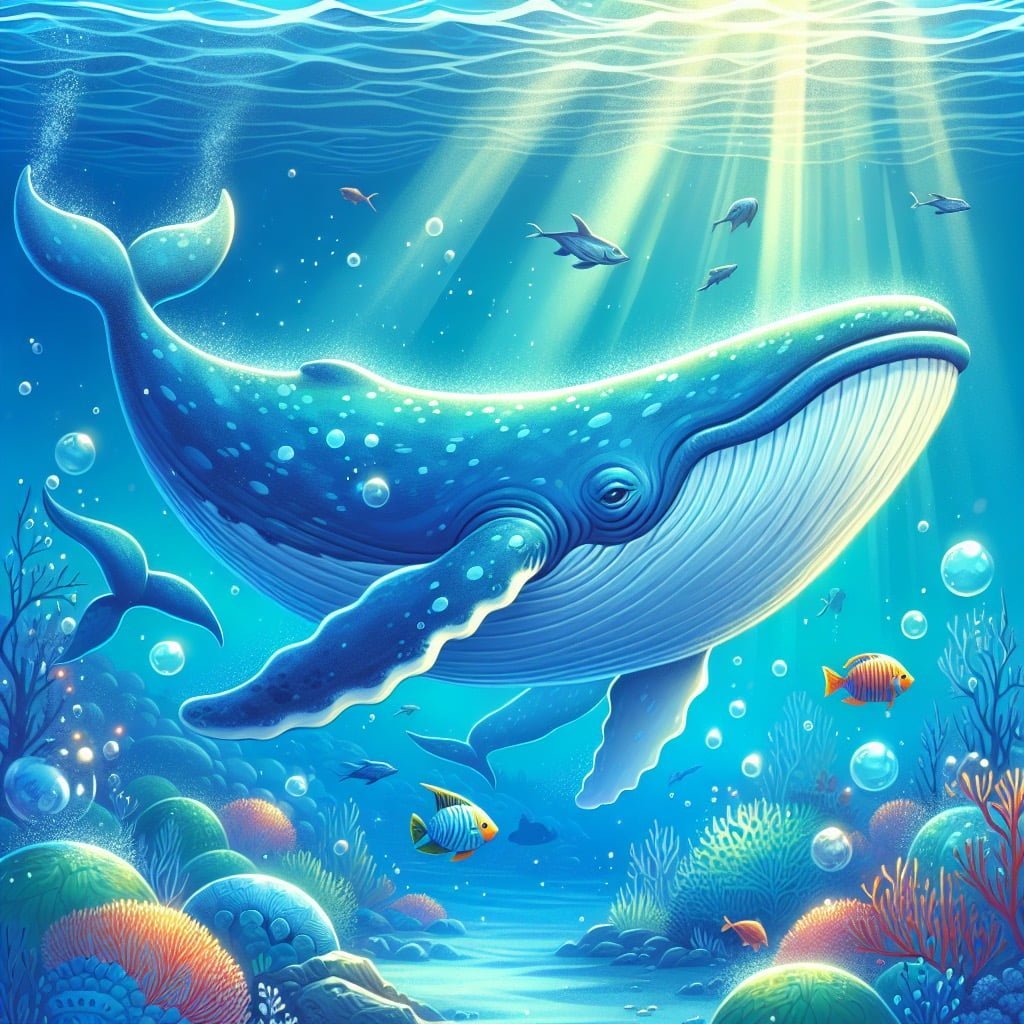
For younger kids: Whales have big flippers that look like paddles, helping them swim really fast!
For older kids: Whales possess uniquely shaped flippers that are adapted for powerful propulsion in the water, allowing them to swim with remarkable speed and agility.
Detailed explanation:Whales have unusually shaped flippers which are specifically adapted to help them navigate through their aquatic environment. These flippers are one of the defining features of these magnificent creatures and play a crucial role in their daily lives.
One of the most interesting Whale Facts For Kids about whale flippers is that they are actually modified front limbs that have evolved over millions of years to help whales swim efficiently through the water. These flippers are paddle-shaped with a long and slender structure, which allows whales to steer themselves through the water with precision and grace. The unique shape of their flippers also helps whales generate thrust and propulsion, enabling them to reach impressive speeds when necessary.
Furthermore, the bones within a whale’s flipper are structured in a way that is similar to the bones in a human arm or hand, indicating their evolutionary link to land-dwelling mammals. However, the bones in their flippers have become elongated and flattened to form a more hydrodynamic shape, allowing whales to glide through the water effortlessly.
In addition to propulsion and steering, whale flippers also play a vital role in their communication and social interactions. Some whale species use their flippers to slap the surface of the water, creating loud splashing sounds that can travel long distances underwater. This behavior is believed to be a form of communication or a way to signal other whales in the area.
In conclusion, the uniquely shaped flippers of whales are a fascinating adaptation that showcases the incredible evolutionary journey of these marine mammals. From their origins as land-dwelling mammals to their current mastery of the ocean, whale flippers are a testament to the remarkable adaptations that have allowed these creatures to thrive in their marine environment.
Whale Facts For Kids
8. The Echolocation of Whales is Extraordinary
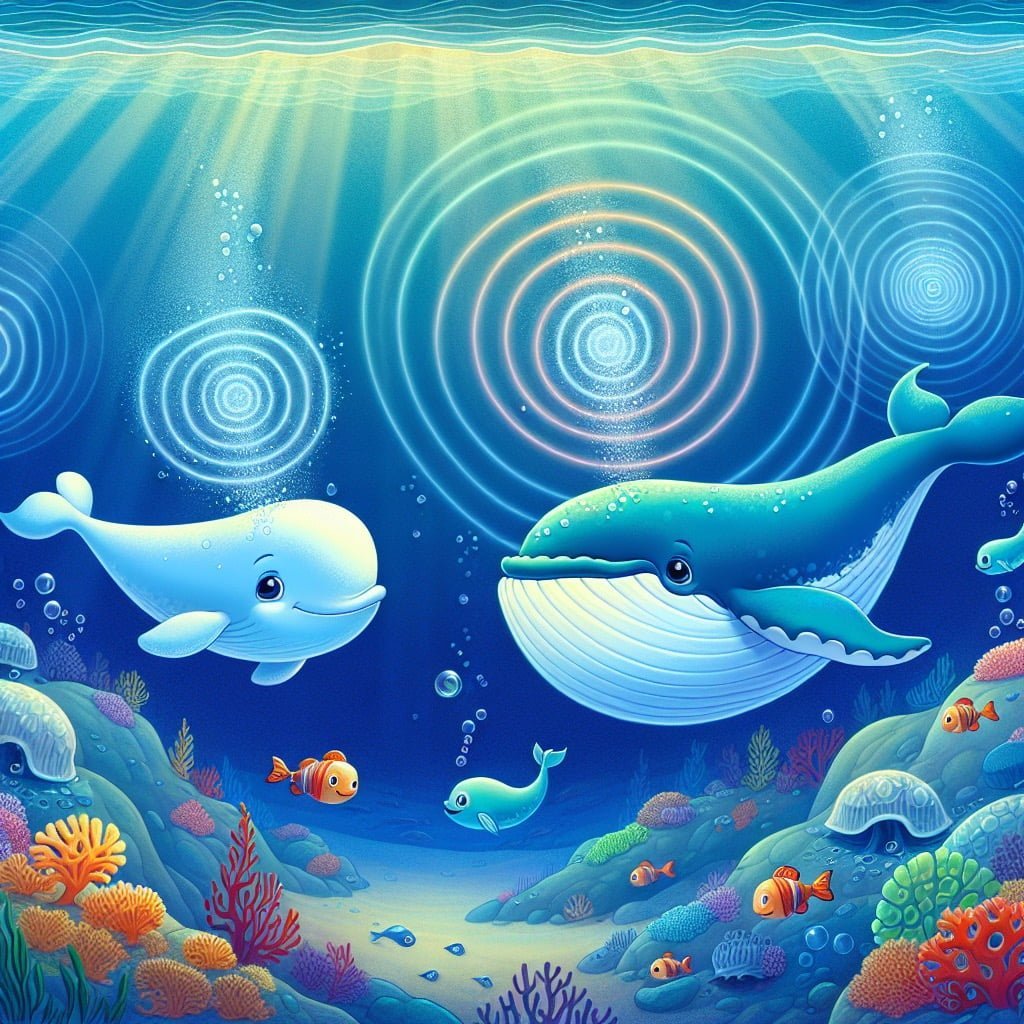
For younger kids: Whales use echolocation to find food and navigate through the ocean, just like dolphins!
For older kids: Whales are adept at using echolocation, emitting clicking sounds and interpreting the echoes to locate prey and objects in their environment, showcasing their remarkable sensory abilities.
Detailed explanation:Whale Facts For Kids
Whales are known for their extraordinary echolocation abilities, which set them apart from other marine mammals. Echolocation is a process in which animals emit high-frequency sound waves and listen for the echoes that bounce back off of objects in their environment. This allows them to navigate, communicate, and locate prey in the vast ocean depths where visibility is limited.
One of the most fascinating aspects of whale echolocation is the way in which different species have adapted their abilities to suit their specific needs. For example, toothed whales, such as dolphins and sperm whales, have specialized structures in their heads that allow them to focus and direct their sound waves with incredible precision. These whales can produce clicks and whistles that can travel for miles underwater, bouncing off of objects and returning to the whales in a fraction of a second. By analyzing the timing and intensity of these echoes, the whales can create detailed mental maps of their surroundings.
Baleen whales, such as humpback and blue whales, also use echolocation, but in a slightly different way. Instead of using high-frequency clicks, these whales produce low-frequency moans and groans that can travel long distances through the water. This allows them to communicate over vast ocean expanses and coordinate their movements during migration or feeding.
Overall, the echolocation abilities of whales are truly extraordinary and demonstrate the complexity and intelligence of these magnificent creatures. By studying and understanding these abilities, scientists can continue to learn more about the behavior and ecology of whales in their natural habitats. So next time you see a whale breaching or hear their haunting calls, remember the amazing echolocation skills that help them thrive in the world’s oceans.
In conclusion, Whale Facts For Kids, the echolocation of whales truly is extraordinary.
Whale Facts For Kids
9. Whales Have a Layer of Blubber for Insulation
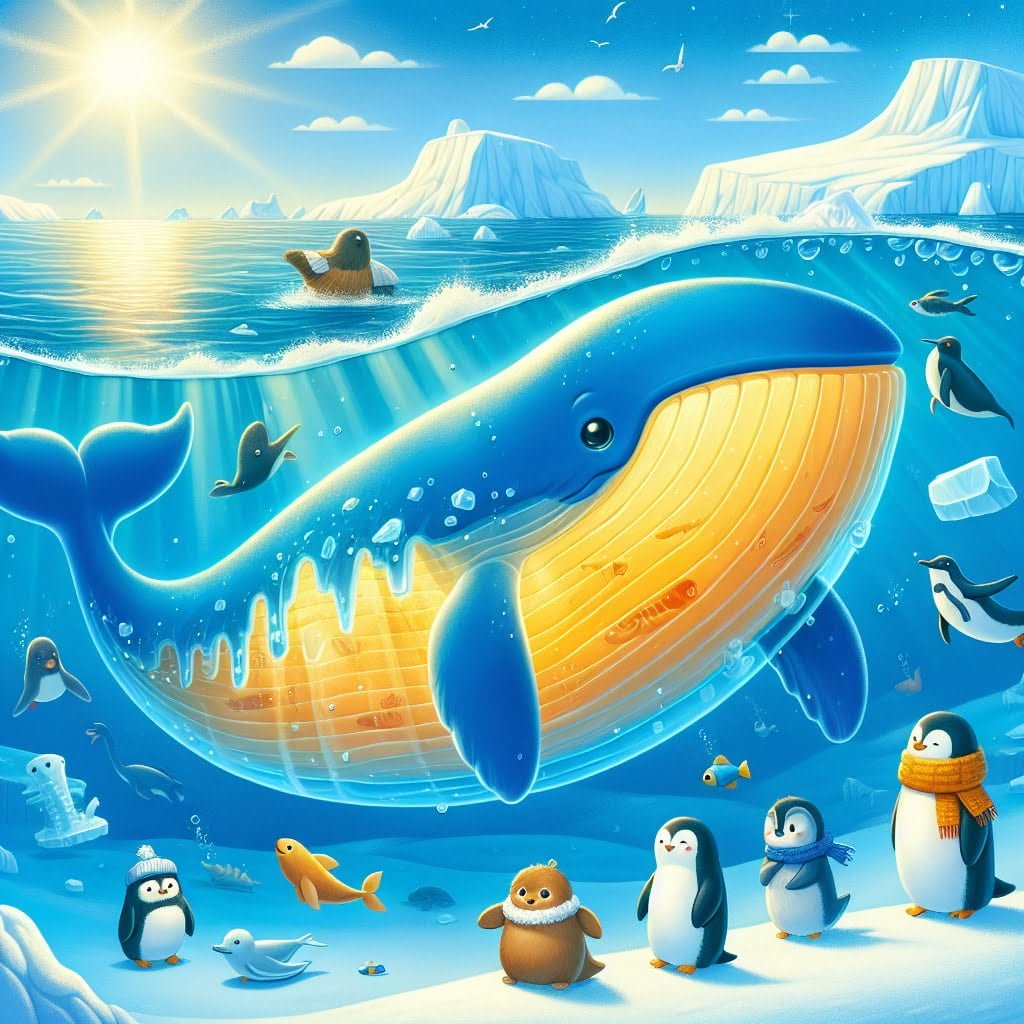
For younger kids: Whales have a thick layer of blubber to keep them warm in the cold ocean water.
For older kids: Whales have a vital layer of blubber under their skin, serving as insulation to keep them warm in frigid waters and providing a valuable energy reserve.
Detailed explanation:Whales have a unique adaptation that sets them apart from other marine mammals – a thick layer of blubber just beneath their skin. This layer of blubber serves as insulation, helping whales to regulate their body temperature and stay warm in cold ocean waters.
Whale facts for kids often include information about this blubber layer, which can be several inches thick depending on the species of whale. The blubber is made up of a combination of fat cells and connective tissue, and serves multiple purposes beyond insulation.
In addition to providing insulation, the blubber layer also acts as a source of energy for whales, particularly during long migrations or periods when food may be scarce. The high energy content of blubber allows whales to sustain themselves for extended periods of time without needing to feed.
Furthermore, the blubber layer also helps to streamline the body of the whale, reducing drag as it moves through the water. This adaptation is particularly important for larger whale species, such as blue whales, which need to conserve energy while traveling long distances.
Overall, the presence of a thick layer of blubber is a key adaptation that has allowed whales to thrive in their marine environments. By providing insulation, energy storage, and hydrodynamic benefits, blubber plays a crucial role in the survival of these magnificent creatures. Next time you’re sharing whale facts for kids, be sure to include information about this fascinating adaptation.
Whale Facts For Kids
10. Whales Are Essential for a Healthy Ocean Ecosystem
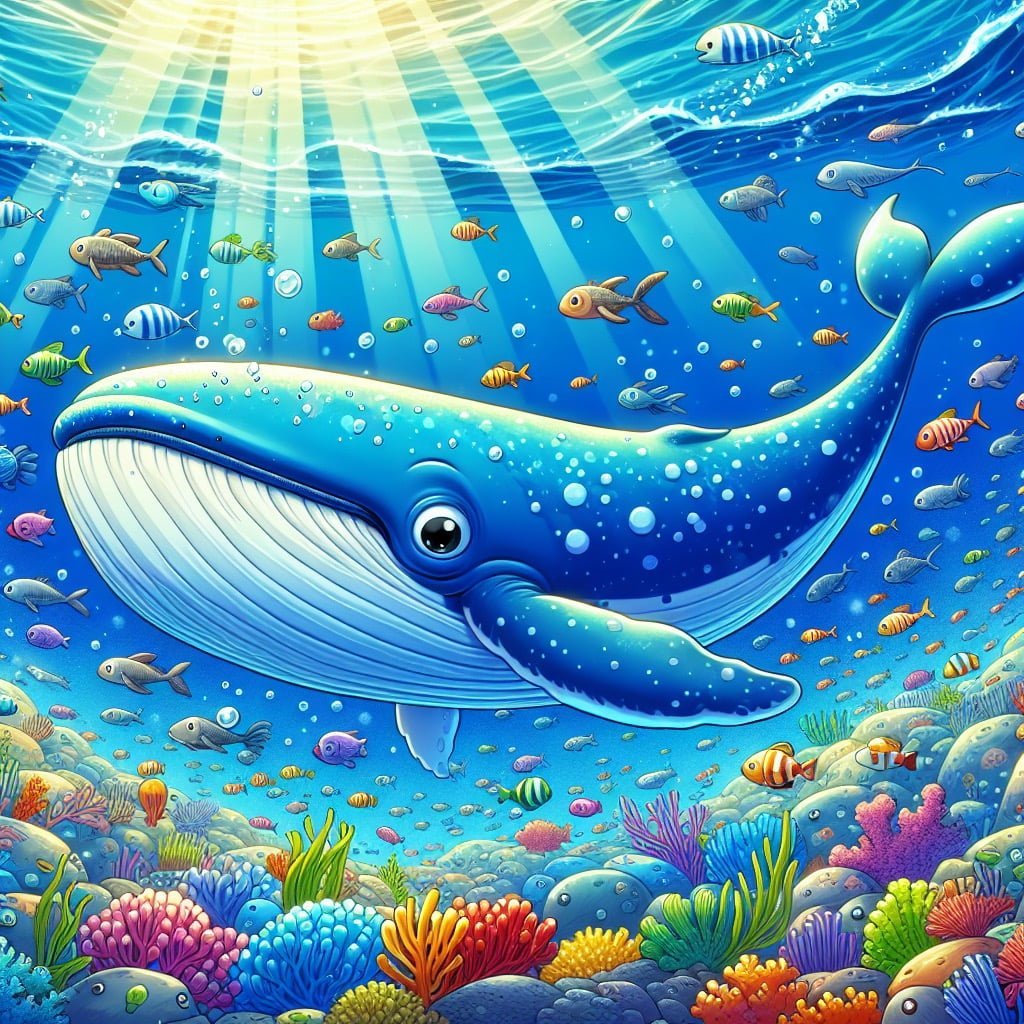
For younger kids: Whales help keep the ocean healthy and alive by eating tiny animals and producing nutrients.
For older kids: Whales play a crucial role in maintaining the balance of the ocean ecosystem by consuming large quantities of small prey, and their nutrient-rich waste supports the growth of phytoplankton, a vital element of the marine food chain.
Detailed explanation:Whales are not only fascinating creatures but also play a crucial role in maintaining the health of the ocean ecosystem. As apex predators, whales help regulate the populations of prey species, such as krill and fish, which in turn helps maintain the balance of the entire food web. Without whales, these prey species would overpopulate and disrupt the delicate equilibrium of the marine environment.
One of the most important roles that whales play in the ocean ecosystem is through their contribution to nutrient cycling. When whales feed at depth, they consume large amounts of nutrients in the form of fish and krill. When they come to the surface to breathe and defecate, they release these nutrients back into the surface waters. This process, known as the “whale pump,” helps fertilize phytoplankton growth, which forms the base of the marine food chain. Without whales to facilitate this nutrient cycling, phytoplankton populations would decline, leading to a cascading effect on the entire ecosystem.
Additionally, whale carcasses provide a vital source of nutrients for scavengers in the deep sea. Whale falls, as they are called, create rich oases of biodiversity on the deep-sea floor, attracting a variety of species that feed on the decaying carcass. These scavengers help break down the whale carcass and recycle its nutrients back into the ecosystem.
In conclusion, it is clear that whales are essential for a healthy ocean ecosystem. By maintaining the balance of prey populations, facilitating nutrient cycling, and providing a food source for deep-sea scavengers, whales play a critical role in sustaining the biodiversity and productivity of the marine environment. Teaching children about whale facts for kids can help raise awareness about the importance of these majestic creatures and the need for their conservation.
Did You Know?
Whales are known to engage in cooperative hunting strategies, where they work together to catch prey by using specific techniques and communicating with one another.
Summary of Whale Facts For Kids
Whale Facts For Kids: Dive into the Incredible World of These Majestic Creatures
Whales are not just the largest animals on the planet, they are also some of the most fascinating and mysterious. With fun facts for kids about whales, we can unlock the secrets of these incredible giants of the ocean and gain a deeper appreciation for their importance in marine ecosystems.
From the mind-boggling size of a blue whale’s heart to the enchanting songs of humpback whales, there is so much to learn and be amazed by when it comes to these magnificent creatures. By delving into the world of whale facts, we not only entertain and inspire wonder in young minds, but we also educate them on the vital role that whales play in our oceans.
Reading more about whale facts for kids is not only enjoyable, it is also an important step towards ensuring the conservation of these majestic creatures for future generations. By understanding and appreciating whales through fun facts, we can instill a passion for marine life in children and encourage them to become stewards of our oceans.
So, join us as we explore the wonders of the ocean and uncover the incredible world of whales through fun and educational facts that will spark curiosity and inspire a love for these amazing creatures. Let’s dive deeper into the fascinating world of whales and work towards a future where they continue to swim freely in our seas.
Sources and additional information for Whale Facts For Kids
WikipediaBritannicaSan Diego Zoo KidsThe Smithsonian InstitutionDK Find Out!Australian MuseumWorld Wildlife FundThe Nature ConservancyAnimal PlanetMonterey Bay AquariumPBS NatureSmithsonian’s National Zoo & Conservation Biology InstituteWorld Wildlife FundAnimal Diversity Web (University of Michigan)IUCN Red List of Threatened SpeciesThe Cornell Lab of Ornithology – All About BirdsNational Audubon SocietyEncyclopedia of LifeSeaWorld Parks & EntertainmentAustralian Museum – AnimalsEncyclopedia of Life
